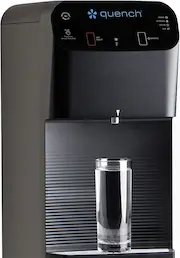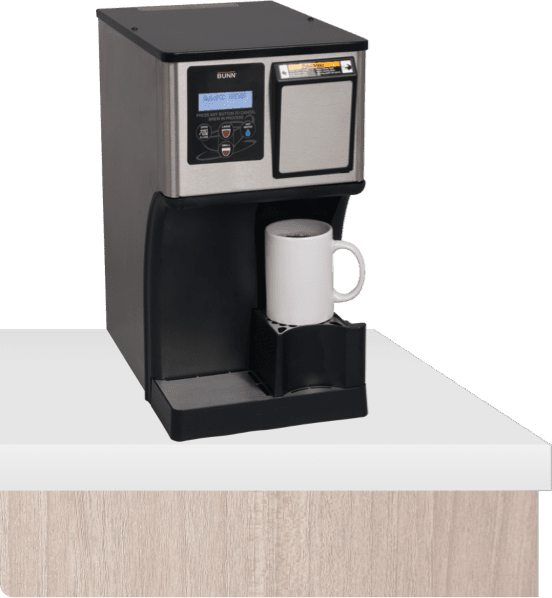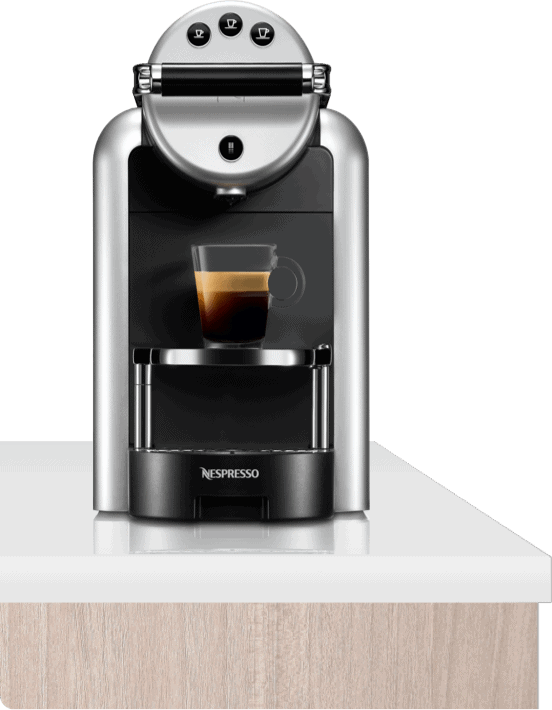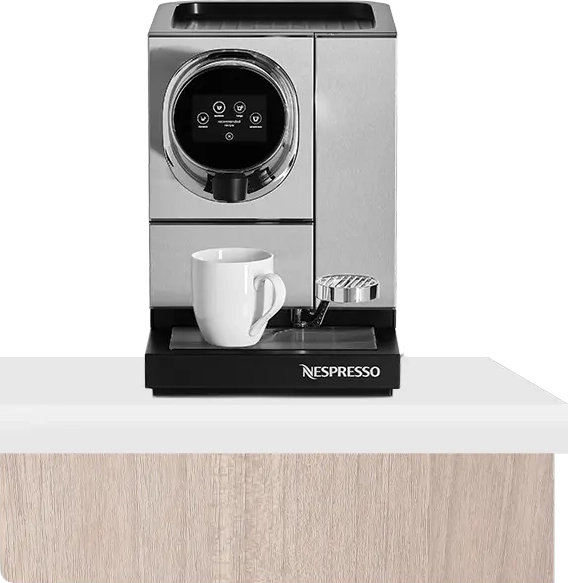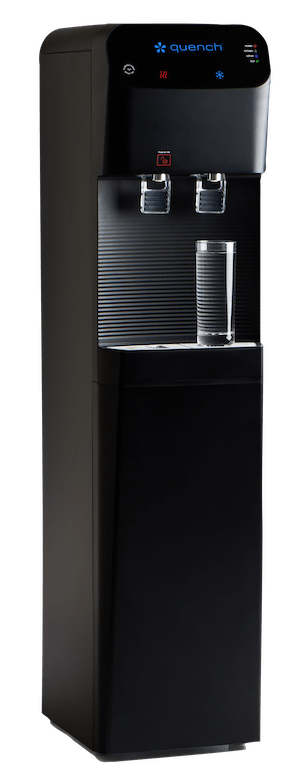Coffee has become more than just a morning pick-me-up; it’s a global sensation that transcends borders to connect people, cultures, and flavors in a way that few beverages can.
While the coffee craze continues, we’re looking at its origins and uncovering a few surprising facts about this popular drink. Plus, we’ll be exploring how workplaces can access exceptional coffee services for the benefit of employees, guests, and customers.
Americans Are Drinking More Coffee Than Ever
Americans have plenty of beverage options to choose from, and while drink preferences change over time, there are a few constants — and coffee has proved to be one of them. Coffee consumption has maintained its stronghold in North America, with its popularity continuing to grow year after year. According to the Centers for Disease Control, when it comes to beverage consumption by volume, water, either bottled or unbottled, takes the top spot at 50%. Following closely behind are coffee at 14%, soft drinks at 10%, milk at 7%, and tea at 7%. This underscores the enduring appeal of drinking coffee.
What’s more, the National Coffee Association (NCA) reports that coffee consumption in the U.S. has reached its highest point in two decades, as people continue to adapt to their new routines post-COVID. Today, 66% of Americans report drinking coffee daily, up nearly 14% since January 2021 and representing the largest increase since the NCA began tracking data.
One place where its influence is especially evident is in workplaces across the country. Coffee has established itself as an office favorite for more than just the caffeine boost; it’s a break room experience that builds workplace relationships, fuels creativity, and promotes productivity. By providing delicious brewed coffee at work, organizations ultimately create a welcoming atmosphere for employees, guests, and customers alike.
A Brief Look at the Long History of Coffee

With the growing popularity of coffee in mind, you might be wondering where it all began. As it turns out, the history of coffee is a rich and long journey that spans centuries.
According to legend, the story of coffee starts in Ethiopia with a goat herder named Kaldi. The herder is said to have stumbled upon coffee’s stimulating properties when his goats become unusually energetic after consuming the coffee beans. This discovery set the stage for the cultivation of coffee plants.
Later on, coffee made its way from Ethiopia to the Arabian Peninsula, where coffee production, cultivation, and trade began to flourish. By the 15th century, coffee had already become an essential part of Arabian culture, with coffee houses serving as meeting places for social and intellectual exchanges.
So, when exactly did coffee start its journey to North America? It’s generally thought that the aftermath of the Boston Tea Party in 1773 — when tea fell out of favor politically — is what propelled coffee into the American consciousness. The following surge in coffee imports quickly solidified the status of this beloved caffeine beverage and tea alternative.
Once the 19th century came around, innovations like drip coffee makers, instant coffee, specialty coffee, new flavors, and more led to another spike in coffee’s popularity. By the mid-20th century, coffee had firmly established itself in American life, shaping the widespread coffee and espresso culture that’s present today.
Explore 9 Fun Facts About Coffee
Explore the following fun facts about coffee that you might not have known before:
1. Coffee is actually a fruit.
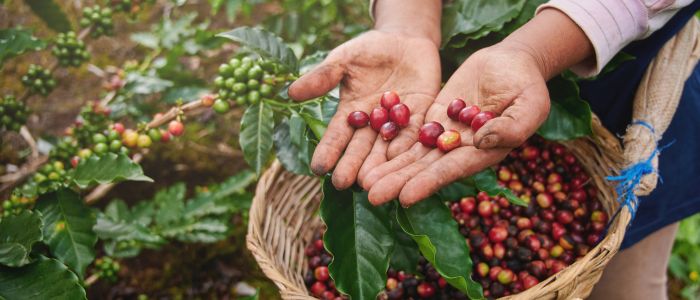
The term “coffee beans” gets thrown around constantly when talking about this caffeinated beverage, but the truth is, they aren’t beans at all — they’re the seeds of a cherry-like fruit. Essentially, a coffee tree produces a bright or yellow fruit, called a coffee cherry, and it’s the seeds inside them that are eventually roasted, ground, and brewed to make the tasty java the world has come to know and love.
2. Brazil produces the most coffee.
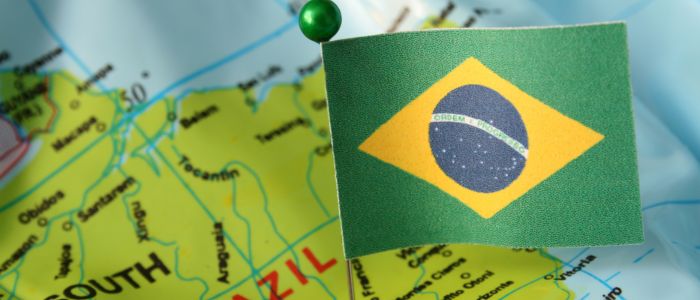
Brazil is the undisputed leader when it comes to producing coffee. According to the International Coffee Organization, exports from the world’s largest coffee-producing region, South America, increased by 15.5% to 23.26 million bags in 2021 as a direct result of shipments from Brazil growing by 24.3% to 16.77 million bags. Today, Brazil produces about a third of the entire world’s coffee supply, which is about twice as much as Vietnam, the runner-up.
3. Multiple groups have attempted to outlaw coffee.
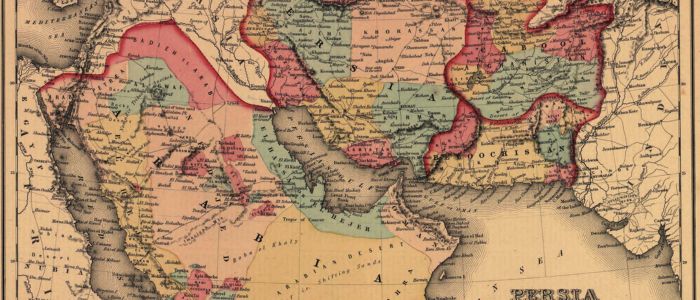
Believe it or not, coffee has faced multiple periods of opposition throughout history. For instance, the Coffee Mill reports that attempts to ban coffee started as early as 1511. At the time, Khair Beg, the Governor of Mecca, tried to outlaw coffee, labeling it a dangerous drug that stimulated radical thinking in the city’s residents. However, the Sultan of Egypt eventually overturned the rule to keep coffee flowing throughout the streets of Mecca.
Continued attempts to ban this caffeinated beverage also came about in the Catholic church in the 16th century, the Ottoman Empire, Sweden in the 18th century at the hands of King Gustave III, and finally in Prussia.
4. Keep your coffee warm for longer with cream.

Adding cream to your coffee is not only a great way to give your cup of joe a creamy texture and sweeter taste, but it also helps keep the drink warm for an extended period. In fact, research from Modernist Cuisine found that coffee with cream cools up to 20% more slowly than plain black coffee. This is because the fat in the cream acts as an insulator, slowing the dissipation of heat from your cup — which might come in handy on long work days or during lengthy office meetings.
5. Finland drinks the most coffee worldwide.
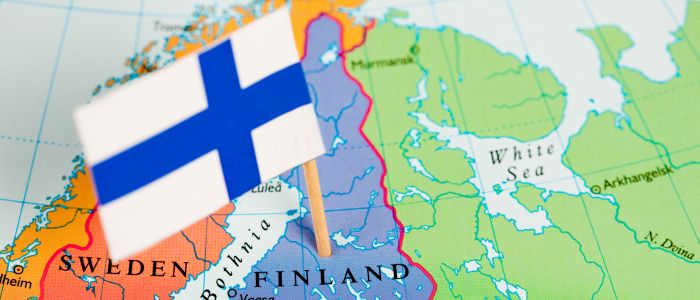
When it comes to coffee consumption, Finland takes the crown. According to World Population Review, Finland is the world’s biggest consumer of coffee on a per-person basis, with the average Finn drinking nearly four cups each day — which averages out to about 26 pounds of coffee per person annually. As strange as it may sound to workers in the U.S., the beverage is so popular there that two 10-minute coffee breaks are now legally mandated for Finnish workers daily.
6. Coffee helps you live longer.

Here’s a little good news for every coffee lover: Studies have shown that individuals who drink up to eight cups of coffee per day may slightly lower their risk of early death compared with non-drinkers, per Harvard’s School of Public Health. This includes suggesting that moderate coffee consumption can reduce the risk of chronic diseases like heart disease, Parkinson’s, and type 2 diabetes.
7. Hawaii isn’t the only state that produces coffee.
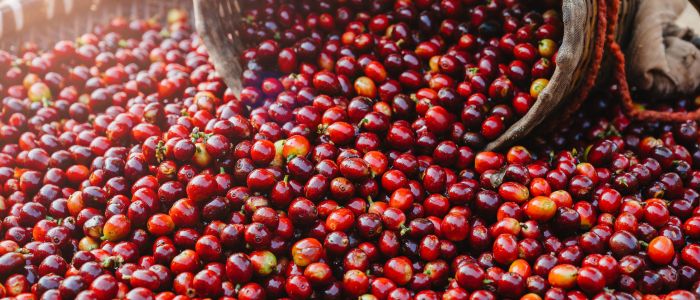
While many assume Hawaii is the sole producer of coffee in the U.S. — renowned for its Kona coffee — it’s not the only state in the java game. World Atlas reveals that coffee can also be commercially grown in California, with experimental coffee-growing projects popping up in Florida recently as well.
8. The most expensive coffee in the world can cost up to $100 per cup.

Kopi Luwak or civet coffee is an Indonesian specialty and one of the most expensive coffees in the world. What makes this coffee different? Simply put, cat poop. With prices ranging between $35 and $100 a cup, or about $100 to $600 a pound, this coffee is made from beans that have been digested by an animal called the Asian Palm Civet. While the cleaning process for this drink results in a smoother cup, the intricate production method has led to exorbitant prices for Kopi Luwak coffee.
9. Coffee provides valuable health benefits.

In addition to its delightful taste and energizing effects, coffee provides drinkers with a range of health benefits. This includes protecting cells from damage, improving mental alertness, reducing the risk of depression, enhancing physical performance, and more.
Access Delicious Coffee On-Demand With Quench®
As you consider the interesting facts we’ve covered and begin the journey to enhance your workplace’s coffee experience, Quench is ready to be your trusted partner along the way. Our comprehensive suite of coffee machines makes brewing coffee easy, ensuring your teams have easy access to delicious java whenever they need it.
At Quench, we understand that a good cup of coffee is more than just a drink or a simple caffeine boost; it’s a well-deserved break for your busy team members. That’s why we go beyond just great taste and emphasize employee wellness by pairing our coffee units with advanced filtration systems. This helps workplaces enhance the quality of their coffee offerings and ensures clean water is used.
While our line of coffee makers exclusively offers hot-brewed coffee, our array of ice machines perfectly complements our brewers, so your team members can make iced coffee or cold brew whenever they prefer. What’s more, workplaces can use our user-friendly customer portal to effortlessly order new coffee flavors, break room supplies, or Quench coffee machine accessories as needed.
Ready to choose Quench as your office coffee service provider? Explore all of our coffee machines or schedule an appointment with a Quench Coffee Expert today.
